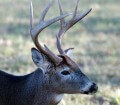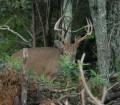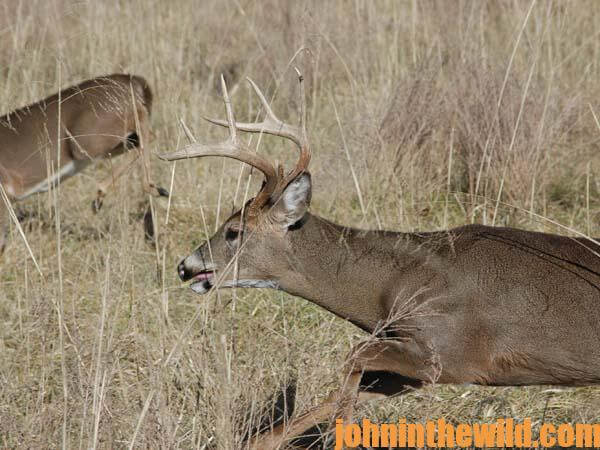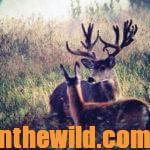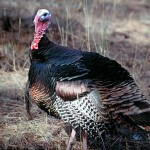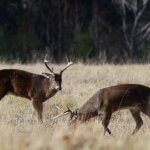Editor’s Note: Sometimes, a buck will see you or hear you – and you’ll still get a shot. But if he smells you – he’ll be gone.
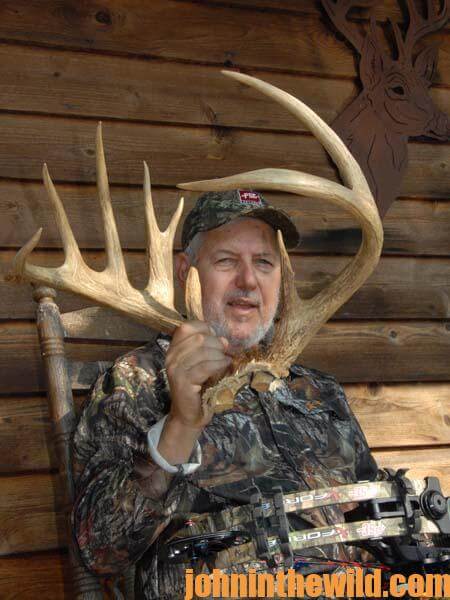 At this time (see Days 1 and 2) many hunters would continue on with their hunt plans and disregard the wind. But Dr. Robert Sheppard of Tuscaloosa, Alabama, who hunts as much as possible, is a staunch believer that to be successful hunting deer, he must hunt as the wind dictates. Since 80 percent of his time in the woods is spent in scouting, selecting stand sites and cutting shooting lanes and only 20 percent of his time is actually spent in a tree, he doesn’t view the days with variable winds as wasted hunting time. But he does recognize that one of the most-difficult situations where a hunter can be successful is to sit in a tree stand for several hours with the wind whipping around him and carrying his scent all through the woods.
At this time (see Days 1 and 2) many hunters would continue on with their hunt plans and disregard the wind. But Dr. Robert Sheppard of Tuscaloosa, Alabama, who hunts as much as possible, is a staunch believer that to be successful hunting deer, he must hunt as the wind dictates. Since 80 percent of his time in the woods is spent in scouting, selecting stand sites and cutting shooting lanes and only 20 percent of his time is actually spent in a tree, he doesn’t view the days with variable winds as wasted hunting time. But he does recognize that one of the most-difficult situations where a hunter can be successful is to sit in a tree stand for several hours with the wind whipping around him and carrying his scent all through the woods.
“You’ve got to remember that if you want a deer to get within 30 yards of you if you’re bowhunting, most of the time you will have to wait patiently for that deer to come in slowly. Since the deer will be approaching you slowly and testing the air as he comes, the odds are extremely good that he will smell you on a variable wind before you see him. Then you have wasted the day sitting in a tree.”
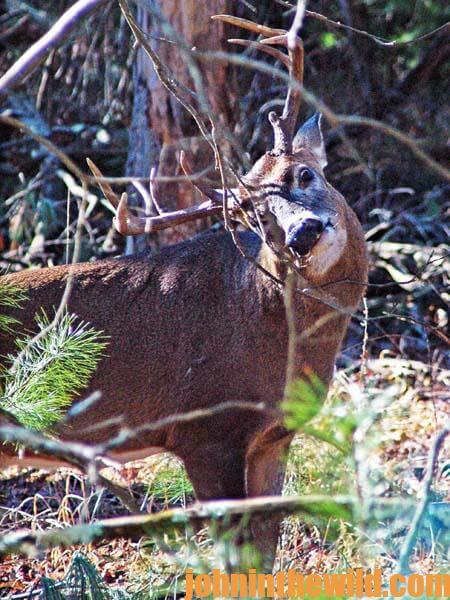 After listening to the weather radio and checking his compass on his way to his stands to see which way the chimney smoke is being blown, Sheppard next stops his car in a region that has a wide-open field on both sides of the road. “Just before I reach the area I plan to hunt. I don’t want any trees or obstructions to create any turbulence in the wind. I get out of the car and take one of my broadheads that has a piece of string tied to it, hold it out and see in which direction the wind pushes the string. Then I check the wind with my compass to make sure that the wind is still blowing in the same direction that I heard on the weather radio and that I saw blowing from the chimneys. If the wind direction is still constant, then I go ahead and walk through the woods to the stand I’ve planned to hunt from that day. As I approach the tree stand, I also am conscious to walk into the wind and not with the wind at my back.”
After listening to the weather radio and checking his compass on his way to his stands to see which way the chimney smoke is being blown, Sheppard next stops his car in a region that has a wide-open field on both sides of the road. “Just before I reach the area I plan to hunt. I don’t want any trees or obstructions to create any turbulence in the wind. I get out of the car and take one of my broadheads that has a piece of string tied to it, hold it out and see in which direction the wind pushes the string. Then I check the wind with my compass to make sure that the wind is still blowing in the same direction that I heard on the weather radio and that I saw blowing from the chimneys. If the wind direction is still constant, then I go ahead and walk through the woods to the stand I’ve planned to hunt from that day. As I approach the tree stand, I also am conscious to walk into the wind and not with the wind at my back.”
Once Sheppard arrives at his stand, gets into his tree and nocks his arrow to begin the long wait, he still has the string tied to the end of his broadhead. “Then any time the wind changes direction, or there is a variation in air movement, I can tell which way my scent is being blown from that string on my arrow. I practice shooting with the string on my arrow. I have learned that the string in no way inhibits the flight of the shaft.”
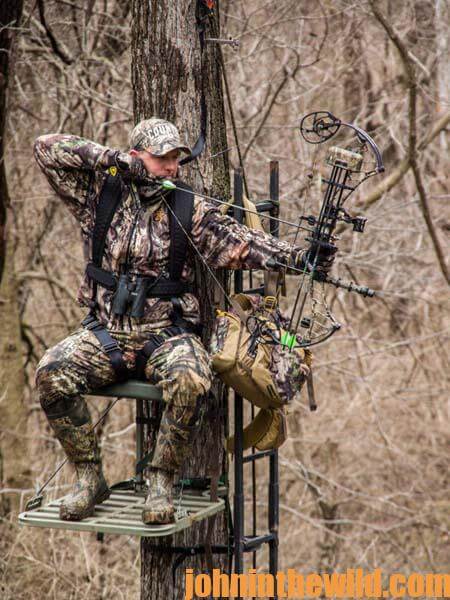 To get John E. Phillips’ eBooks and print books on hunting deer, “How to Hunt and Take Big Buck Deer on Small Properties,” “How to Hunt Deer Up Close: With Bows, Rifles, Muzzleloaders and Crossbows,” “PhD Whitetails: How to Hunt and Take the Smartest Deer on Any Property,” “How to Take Monster Bucks,” “How to Hunt Deer Like a Pro,” and “Bowhunting Deer: Mossy Oak Pros Know Bucks and Bows,” or to prepare venison, “Deer & Fixings,” click here.
To get John E. Phillips’ eBooks and print books on hunting deer, “How to Hunt and Take Big Buck Deer on Small Properties,” “How to Hunt Deer Up Close: With Bows, Rifles, Muzzleloaders and Crossbows,” “PhD Whitetails: How to Hunt and Take the Smartest Deer on Any Property,” “How to Take Monster Bucks,” “How to Hunt Deer Like a Pro,” and “Bowhunting Deer: Mossy Oak Pros Know Bucks and Bows,” or to prepare venison, “Deer & Fixings,” click here.
For information on making jerky from your deer to provide a protein-rich snack, you can download a free book from https://johninthewild.com/free-books.

